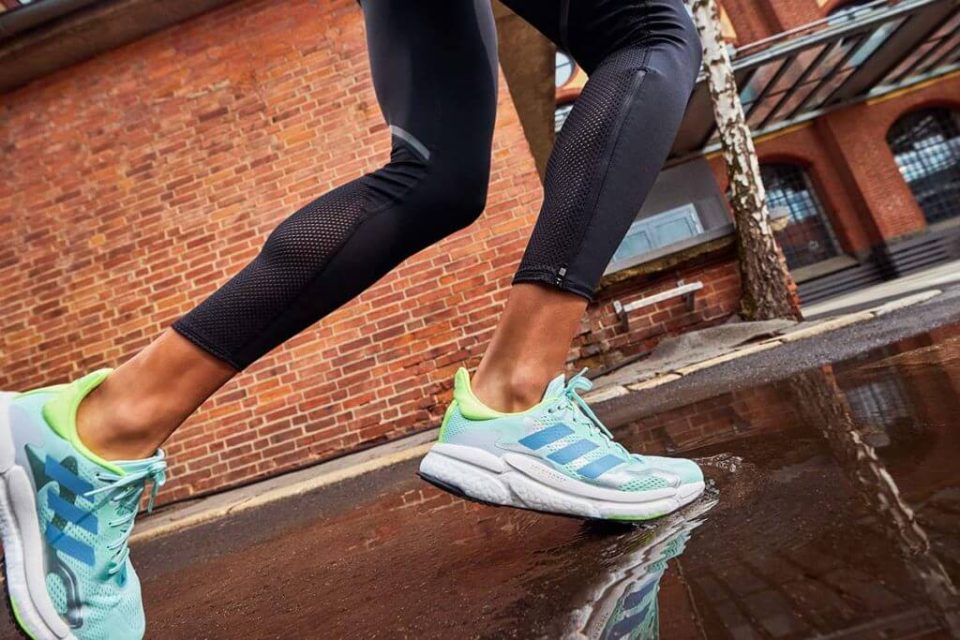by Pauline Six
Lucie, a 31-year-old runner, is suffering from urinary incontinence. She has been an active runner for seven years. Ashamed of her leaky bladder condition, she does not dare tell a soul. She wears protection to avoid wetting her underwear. Since the subject is somewhat taboo among her peers, we’d like to help Lucie and anyone else suffering from this condition by removing the stigma and addressing this health challenge.
While bladder leakage is certainly annoying, it shouldn’t prevent women – or men – from running and keeping a regular training schedule. Although urinary incontinence can also affect men, women are more likely to suffer from the condition at some point in their lives. For this reason we’re focusing here on bladder leakage among women. We’ve broken down the problem and identified some simple solutions.
What is bladder leakage?
Medically known as “Stress Urinary Incontinence” (SUI), the condition describes involuntary bladder leakage. This is often triggered by an active lifestyle, like that of a runner, but can also come from coughing, sneezing or laughing too hard. Unfortunately, SUI comes with little to no warning signs; without the urge to use the bathroom, it often catches you completely by surprise.
How does bladder leakage happen?
Simply put, SUI occurs when bladder pressure exceeds your internal capacity during exercise.
Imagine an inflated balloon held closed by a piece of string wrapped around the opening. When the balloon becomes too inflated, the string unties itself and the air inside the balloon is released.
For women, running creates vertical pressure on the perineum due to gravity, which can cause leakage.
As a woman athlete, it’s important to balance heavy abdominal workouts with training to strengthen the perineal muscles or pelvic floor. Bladder leakage affects many female athletes; those who focus more on strengthening abdominal muscles than perineal muscles are more likely to suffer from this condition.
Stress Urinary Incontinence: the primary risk factors
- Age: People over 65 have a greater risk of developing SUI.
- Body Mass Index: A high BMI is an identified risk factor for the occurrence of SUI. (1)
- Pregnancy & Childbirth: Trauma during childbirth is associated with weakening of the perineum, leading to SUI.(2)
Risk of incontinence in women based on exercise type
Incontinence among female athletes varies according to the physical activity. Here is a list of common sports divided into risk levels:
High risk sports
- Running
- Acrobatic gymnastics
- Aerobics
- Hurdling
- Basketball
- Volleyball
- Handball
- Martial arts
Moderate-risk sports
- Tennis
- Badminton
- Skiing
Low-risk sports
- Walking
- Swimming
- Biking
- Roller skating
- Golf
Managing Incontinence When Running
For occasional small leaks while running, the simplest solution is using bladder control tampons. This may be all you need to avoid any risk of leakage during an outing.
Good to know:
A bladder control tampon is not what you might imagine it to be. You don’t have to insert anything into your urethra (which you should never do). Instead, this tampon is inserted into the vagina and it expands to support the urethra and stop urine leakage while running or otherwise.
If you experience urinary incontinence regularly, it’s important to get to the root of the problem. Rather than seeking out temporary fixes, let’s look at a few techniques for better bladder control, so you can just… run.
1. Perineal Rehabilitation
The central idea is to bring greater awareness to the perineal muscles. Exercises focused on these muscles help to strengthen and tone the pelvic floor, which can help prevent SUI.
Exercise you can do at home: Lying on your back, knees bent with your feet on the floor. Exhale deeply, tuck in your stomach, then contract the perineum as if trying to block the urge to urinate. Hold the contraction for 10 seconds. Release for 20 seconds. Repeat 10 times.
2. Abdominal strengthening
This aspect of training is crucial, in conjunction with perineal exercises. Urinary incontinence in athletes is partly caused by abdominal pressure.
Abdominal “crunches” should be avoided. When the shoulders are brought in toward the pelvis, it can cause an increase in intra-abdominal pressure, leading to an increased risk in leakage.
Core training is how we strengthen the transverse abdomen muscle, which reduces excessive abdominal pressure, resulting in less bladder leakage for women athletes. Athletes can perform ventral, lateral or dorsal plank exercises. These exercises can be performed statically or dynamically, which makes the exercise more difficult and more effective.
3. Breathing exercises
It’s important to work on your breathing in order to create a healthy synergy between your diaphragm and your abdominal muscles. A simple way to accomplish this is to tuck in the belly when you breathe. Learning how to breathe properly while running or strength training will also help you get more out of your workouts.
4. Bladder leakage surgery
If all else fails, the method for treating SUI is surgical treatment. Consult your doctor for the most effective treatment plan.
Let’s talk about it
Urinary stress incontinence is a common condition that female athletes should feel totally free to discuss. So, let’s put an end to the taboo and share our experiences. Strengthening your pelvic floor muscles is always a good idea, so remember: combined abdominal-perineal strengthening is essential. The best news is, you can forget crunches, because they only make the matter worse.
About the author:
,

